originally posted at https://canmom.tumblr.com/post/701866...
Hey everyone, happy Thursday! It’s Animation Night. Come, have a seat~
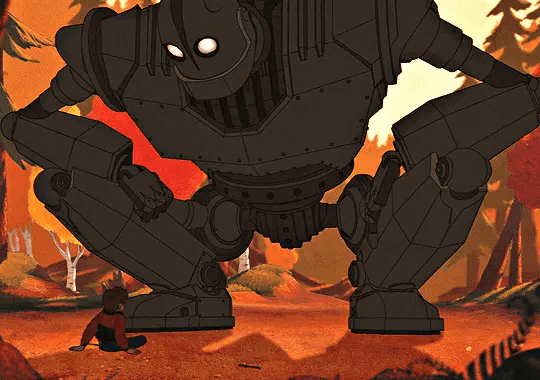
We’ll get to you, Iron Giant. Hold on.
Earlier this week, I got fixated on writing a post attempting to figure out my answer on the question of why the big American animation studios abruptly turned away from traditional animation in the early 2000s - a subject previously visited, if briefly on Animation Night 31 and Animation Night 49. A string of high-profile 2D and 2D-in-3D failures, such as Treasure Planet, set against a string of 3DCG successes by Pixar, Dreamworks and increasingly other studios may have been the justification for executives claiming audiences no longer want to see 2D animation - but were they really the reason? Did the higher-ups deliberately sabotage 2D with (for example) scheduling decisions in order to make cheaper, non-unionised 3D films?
I’m grateful that people seemed to like my post there, but I actually don’t think my argument is quite satisfactory. I argued CG films by the same studios weren’t cheaper to make by and large (and also aren’t entirely non-union), but I only pulled up a handful of data points to make that claim. A more thorough investigation is due.
But in the meantime, it’s Animation Night. When I made that post, I was critical of the artistic decisions made in the post-Prince of Egypt films of Dreamworks, such as Spirit and Sinbad, which we watched back on Animation Night 43. I speculatively extended that to The Road to El Dorado, which I haven’t seen, and was promptly challenged by fans of that movie to give it a fairer shake. Sorry guys!
Let’s put that right. Tonight we’re going to be taking another look into that era. You’ll get to see this gif…

…and this one…

…in their original context.
But this is Animation Night, so we’re gonna be putting some Context down.
The first decade or so of Dreamworks was defined by sour grapes. To summarise briefly, Jeffrey Katzenberg left Disney after a bitter falling out with Michael Eisner over succession following the death of Frank Wells. Instead of promoting Katzenberg to Wells’s position of President, Eisner took over Wells’s duties himself, in part at the behest of Walt’s nephew Roy E. Disney. A furious Katzenberg, who was already not loved by many animators for his heavy-handed meddling in the direction of films, departed and founded a new company with Steven Spielberg and David Geffen. (He’d also start a lawsuit with Disney, eventually settled for hundreds of millions of dollars. It was bloody!)
Thus began the years where Dreamworks seemed to be trying very hard to show up Disney and Pixar - although Katzenberg always denied this and insisted the similarities were coincidental. This was primarily true on the CG side, with movies like Antz targeting A Bug’s Life (much to the upset of Pixar’s John Lasseter) and Shark Tale targeting Finding Nemo.
But the year 2000 also saw a battle of traditionally animated films on the subject of the Maya and Inca, both with the conceit of someone assuming the position of Emperor. Disney released The Emperor’s New Groove, while Dreamworks released The Road to El Dorado. Whether these films were intentionally similar is not entirely clear, but Disney certainly thought Katzenberg was copying them, and both studios ordered their animators to race to get their movie out first. (In the end, Dreamworks won by some margin, releasing in March.)
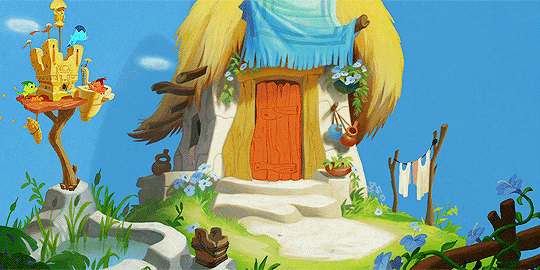
Since these two movies deal with at least superficially similar subject matter, coming from the same era and animation tradition, it’s interesting to contrast them. Disney’s character designs are highly graphical and stylised, pushing into more angular shapes and generally very broad, exaggerated movements. To an extent its characters share some DNA with Mignola’s designs for Atlantis: The Lost Empire. The backgrounds are just as stylised, the stagings more flat and theatrical.
Dreamworks, meanwhile, takes the same semi-realism approach as all its other designs in this period; its cinematography is a little more towards the live action end of the scale with more close-ups and a stronger sense of space, the proportions of its characters a bit more grounded.
Beyond the setting, the major similarity between these movies is that both were conceived initially as a dramatic story, and retooled into a comedy during production.
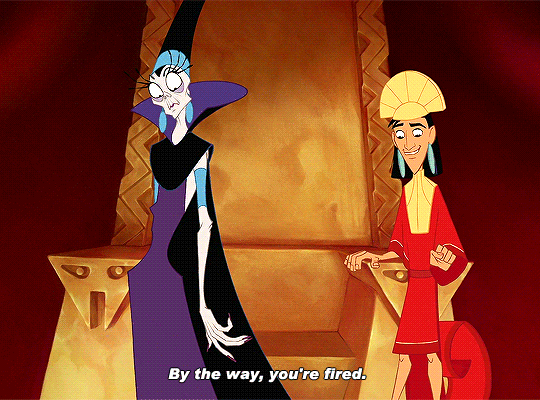
In the case of Groove, the story goes that Lion King director Roger Allers was called into the office of Thomas Schumacher, who proposed making a film about either the Maya, the Inca or the Aztecs. Allers liked this idea, and set about drafting a film that would be called Kingdom of the Sun, drawing on 1894 novel The Prisoner of Zenda. An outline of this film is available (ty wikipedia)…
Kingdom of the Sun was to have been a tale of a greedy, selfish emperor (voiced by David Spade) who finds a peasant (voiced by Owen Wilson) who looks just like him; the emperor swaps places with the peasant to escape his boring life and have fun, much as in author Mark Twain’s archetypal novel The Prince and the Pauper. However, the villainous witch Yzma has plans to summon Supay (the evil god of death), and destroy the sun so that she may become young and beautiful forever (the sun gives her wrinkles, so she surmises that living in a world of darkness would prevent her from aging). Discovering the switch between the prince and the peasant, Yzma turns the real emperor into a llama and threatens to reveal the pauper’s identity unless he obeys her.
During his time as the emperor and doing Yzma’s orders, the pauper falls in love with the emperor’s soon to be fiancée Nina who thinks he is the emperor that has changed his ways. Meanwhile, the emperor-llama learns humility in his new form and even comes to love a female llama-herder named Mata (voiced by Laura Prepon).[12] Together, the girl and the llama set out to undo the witch’s plans. The book Reel Views 2 says the film would have been a “romantic comedy musical in the ‘traditional’ Disney style”.[13]
However, after Pocahontas and Notre Dame failed to make the stonks go up enough, Disney got cold feet about another movie with such dramatic scope. First, they called in Mark Dindal of Cats Don’t Dance to co-direct; then, worrying about making the summer 2000 release, Disney producers Thomas Schumacher and Peter Schneider ordered that the animation team would split in two and fight to the death each produce its own proposal to fix the film. Dindal proposed making it a straight-up farce; Schumacher and Schneider liked this and Allers quit, rather heartbroken at having spent four years of his life on the project.
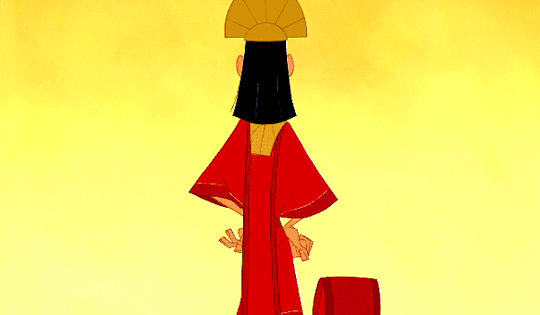
Thus, starting in September 1998, with about a quarter of the film already animated, the project was extensively retooled on pain of cancellation. The basic premise (evil witch, emperor gets turned into llama) was kept, but the tone changed, and the animation was to be made simpler. A number of people left, notably animator Andreas Deja supervising Yzma, who went to work on Lilo & Stitch. You can read this grisly details here. The whole affair was documented by Trudie Styler as a condition of her husband Sting providing music, which is probably why we know quite so much about it. Sting actually also intervened in the story, demanding a rewrite of a planned ending where the emperor Kuzco, restored to humanity, bulldozes a rainforest to build a theme park (idek).
The movie that resulted from this tortured production process is basically a long string of rapid-fire visual jokes in the manner of a much older cartoon; it didn’t make a lot of money, but nevertheless gained something of a cult following. Which is also something that can be said of Road…
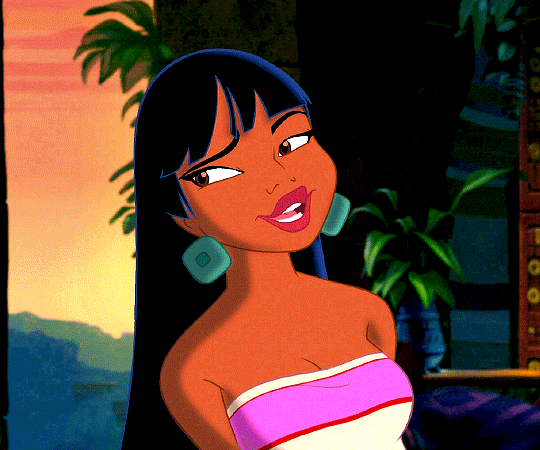
The story with Road is not quite so messy but still pretty messy. While Disney steered well clear of having any Europeans involved, Katzenberg decided to set a film during the Spanish conquest of the Americas, contemporary with the invasion of Hernán Cortés. Cortés, exploiting the tensions created by Aztec imperial rule over the many other peoples like the Totonacs and Nahuas, pursued a divide-and-conquer strategy which resulted in the Spanish and their new allies sacking the Aztec capital Tenochtitlán, thus installing the Spanish as the new imperial rulers… who unfortunately turned out to be even worse than the last guys. In place of the Aztecs’ system of tributary provinces and spectacle of human sacrifice, the Spanish brought in hundreds of years of genocide, epidemic disease, brutal slavery under the encomienda system and indoctrination to Catholicism, which would in the end constitute one of the largest episodes of mass death in human history.
Somewhat fraught, you might say. However, it doesn’t really seem like anyone did say.
The impetus for this movie came from above: Katzenberg summoned two of his screenwriters and said (this is definitely a direct and real quote) “here is a book about the Maya and the Conquistadors, write me a movie about this kthx”. “How about,” said Ted Elliot and Terry Rossio, “a spin on one of those Road to… movies from the 40s, a buddy comedy with a guy following a map to a mysterious city of gold?”
“Great!” said Katzenberg. “Sounds like another grand, dramatic animated film like Prince of Egypt! That’s the kind of movie I like.”
“What if it’s a kind of white saviour thing where our guy, who accidentally becomes Emperor, goes on to save the Maya residents of a fictional city from Cortés? And we’ll make it horny, we’ll have a Maya princess love interest who doesn’t wear a lot?”
“Mm, sounds good.”
“OK, cool. Yo, Will Finn and David Silverman - direct it! Elton John, get us some of that Lion King score magic, eh?”
Time passes. The Prince of Egypt is well underway, with all of Dreamworks’s best animators, such as James Baxter, drawing it.
“Actually,” says Katzenberg all of a sudden, “I’ve changed my mind. We need a comedy to follow that. Movie’s on hold. Rewrite it to be funnier. And that’s too horny, let’s keep it PG-13.”
“Oh.” say Finn and Silverman. They leave. Finn writes to Katzenberg to try and smooth things over, but Katzenberg brushes him off. “You don’t quit Jeffrey.” said one unnamed source. “If you do, he closes the door behind you.” Instead, the film goes to some guys called Eric “Bibo” Bergeron (no idea where the nickname comes from) and Don Paul.
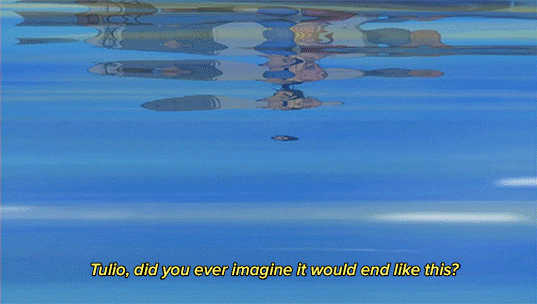
Katzenberg’s micromanagement seems to be the throughline for a lot of this. At one point, he was so overbearing that James Baxter had to intervene:
In one meeting, character animator James Baxter, a normally shy and bashful Brit, stood up to his boss in front of the other artists and told him to back off.
“You don’t know what you’re doing.” Baxter said. “You’re too involved. You’re losing the respect of the artists.”
Katzenberg, who respected Baxter, had seemed to listen. For a few weeks, at least, he kept a greater distance from the production. But soon, he was back to his old habits.
The other notable development in this movie is the increased use of painted CG sets, similar to the tech Disney would use on Treasure Planet. A contemporary Animation World Network article talks about it in detail, describing how the film’s backgrounds were completed on computers by the new generation of ‘tradigital’ artists - so for the first time you couldn’t hold a painting in your hands to review it. As well as a shortcut to complex staging in 3D space, the new technique allowed economical reuse of background elements in different shots. Further digital tricks could be used to add small amounts of animation to background characters without increasing the drawing count. The character animation pushed for naturalism and subtlety to suit the ‘buddy comedy’ tone. And judging by the tone of that article, Dreamworks had high hopes for the reception of this movie.
But on release, the movie was met with… a pretty lukewarm response. Mainstream critics were dismissive of its animation and found its characters unconvincing. Indigenous organisations were especially unhappy; Olin Tetzcatlipoca of the Mexica Movement, appalled, compared it to making an upbeat film about a guard in a Nazi concentration camp that doesn’t mention the Holocaust. Audiences, for the most part, paid it little regard. So, like Groove, it dropped out of history, only to be rediscovered decades later and gain a small cult following who declared it a hidden gem. (A large part of the reason likely being that the main pair is eminently shippable.) A couple of gifs were extracted as memes, as seen above.
What do I think? Haha, well, I haven’t watched it yet. But this is going to be an interesting review to treat after we have.
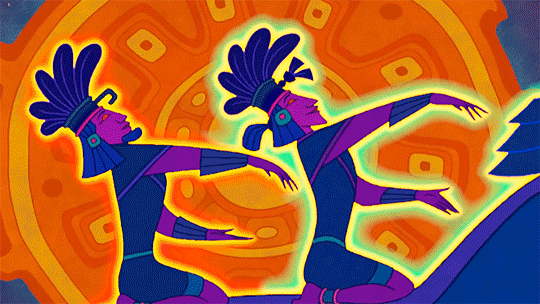
Now, I’ve covered Disney and Dreamworks, but there was another player in the 1999-2000 period who’s relevant to the story. That’s Warner Bros., and director Brad Bird, who would in the future go to direct The Incredibles and Ratatouille at Pixar; his 1999 movie The Iron Giant is as I recall a good film, and interesting as one of the very few animated films to address a cold war setting and the terror of living under nukes. (We watched another, When the Wind Blows, on Animation Night 26). That’s a story worth telling, but with an eye on the time, I think it’s going to have to be told another night.
So, if you will join me, tonight we’ll be watching Groove and Road. Are they indeed forgotten gems that did not deserve their dismissal? Are they just shallow comedy? Big racist messes? Let’s go and find out.
Animation Night 133 will be going live shortly at twitch.tv/canmom, and we’ll be screening movies in about half an hour (22:20 UK time roughly) - hope to see you there!
Thanks for coming to Animation Night everyone! Now comes the part where I critique some 22-year-old movies.
Of the two, I feel like The Emperor’s New Groove comes off better. Part of that - a very large part of that - has to do with animation. As a pair, the two films make an interesting case study, since they really underline the maxim that more frames does not mean better animation.
Or, in other words, “it’s all in the timing and spacing”.
El Dorado is full of complex, ambitious shots, including the above-discussed CG compositing. It has a high drawing count. The drawings themselves are clean, their volumes consistent.
But… it doesn’t use it well. The animation frequently feels floaty. The too-even spacing and lack of held poses robs the motion of impact. The constant movement is too rarely contrasted by stillness. The acting choices tend to be the most obvious. The flashy, expensive shots with big 3D camera moves tend to just… be there, not for any dramatic purpose but because Dreamworks had new tech they wanted to try out.
Watching New Groove right after shows just how much more important it is to have the right frames than lots of frames. So much of the movie’s visual gags depend on a strong sense of timing, an understanding of how much anticipation and follow through is enough and how much is too much, a sense of when to hold a pose for just long enough to be funny - one especially striking example being the trampoline bounce near the end of the film, which holds the stretched out trampoline for just long enough that you notice the unexpected lag.
Despite the very post-Hercules character designs, you can definitely see that they’re going for a (budget-saving) ‘classic’ feel. The backgrounds are loose and fairly abstracted, the staging generally quite flat. There are no 2D-in-3D shots - indeed basically nothing that couldn’t be done on a multiplane camera. It’s appropriate for the story.
As a story, it is functionally like an extended Looney Tunes episode - a vehicle for jokes and not much else. The main emotional arc, Kuzco learning a valuable lesson in not being selfish, is pretty much what you’d expect. The other characters are basically stock. It’s not a movie that’s really all that concerned with drama or stakes. It feels like a parody of another film - and in a sense it is a parody of the never-made Empire of the Sun. Actually, I forgot to mention up above, but there’s a compilation of pencil tests from that movie available…
It would probably have been like, fine. As it is we get a fun but ultimately pretty light movie with a couple of good extended bits (the restaurant scene, which you may well have seen excerpted on Tumblr, is the best one by far). As far as Disney goes, that’s pretty good going!
Groove’s Inca setting is ultimately completely superficial. The movie is about the United States; that’s the cultural context all its jokes rely on. Basically a theme park, even more so than is usual for Disney. But, well, it could be worse…
So as for Road to El Dorado, I’m sorry guys, now I’ve seen it I am not really won around. This is, sadly, exactly the movie I feared it might be: a hot mess.
The problem is basically baked into it at the premise, though the rest of the movie’s storytelling decisions don’t help. It’s a problem that Pocahontas should have made clear: trying to address a history as ugly and complex the Spanish Conquest with this kind of Disney-style movie is just… not viable.
It’s not that it’s impossible to address in an animated film. Brazilian film Rio 2096: A Story of Love and Fury (Animation Night 68) is maybe a fair contrast; inevitably far more limited in its animation, but emotionally far stronger.
I’m not saying you have to deliver a massive history lesson. Rio 2096 is an uncompromisingly dark movie, which presents indigenous guerilla warfare against the Portugese colonisers as the first stage in a series of vignettes about the spirit of resistance across Brazilian history; other episodes involve slave rebellion and students fighting the military dictatorship of the 60s-80s, before imagining that people will continue to fight in a dystopian cyberpunk future. It’s on the nose and eager to rub your face in atrocity, but presented with enough conviction to make it work.
A bit too grim? Certainly, there are other ways to go! But… I find it hard to think of any reasonable way to address this period that’s compatible with the “feel-good” Disney/Dreamworks formula. Or what the Americans consider a PG-13 rating.
The movie does make somewhat more use of its setting than New Groove, with some real history like the Mesoamerican ball game (ōllamalīztli in Nahuatl, pitz in Maya) making an appearance. Unfortunately, these historical nods just underline the movie’s biggest problem, which is that it can’t really seem to decide what it is. Is it a serious dramatic movie like Prince of Egypt, or a comedy with broad comic acting and a premise that is mostly just jokes? The elements come together discordantly.
And when it comes to the setting of this cartoon, it is indeed a cartoon vision of Maya society. A major conflict of the movie is about human sacrifice, always a prurient fascination to people depicting the Maya and Aztecs, but it doesn’t really seem to be able to truly accept that a society could broadly believe in the necessity of human sacrifice (as opposed to framing it as the whim of one evil wizard).
Thus in one of the film’s ‘serious’ moments, when Miguel, in his role as a ‘god’, demands an end to all human sacrifices and dismisses the priest Tzekel-Kan, all the background characters cheer. It’s perhaps the most discordant scene in the movie. If they view human sacrifice as a cruel imposition, why did they tolerate it for so long? If they truly believed human sacrifice necessary, and change their minds, does this not cause a certain crisis of conscience? The filmmakers’ view of the Maya seems to be ‘they were crazy idiots’. This credulity is a source of jokes, with the boys being incredibly obvious in their lies, but the effect of these jokes is ‘look at these primitive idiots’.
The central theme of con artists could be a compelling throughline. At the outset, it didn’t seem likely that the priest Tzekel-Kan or the chief Tannabok (both absolutely zero-dimensional characters) truly believe that Miguel and Tulio are gods; rather, it seemed like Tzekel-Kan intended to use the appearance of outsiders as some sort of power-play against Tannabok; Tannabok, I supposed, went along with it perhaps because he couldn’t be seen to contradict his priest on religious matters.
But in the end, it seems like I was just rewriting the story in my head. Tzekel-Kan at times seems to be using the boys, but visually, he’s indicated to realise that the main duo might not be gods only late in the film after seeing one of them bleed… at which point he concocts a bizarre scheme involving a giant magic robot that seems to only exist for the sake of slotting in an action setpiece. Tannabok seems to know the truth (judging by the scene with Miguel on the boat) but just not especially care, for reasons unclear. Chel, the love interest, is fully aware that they’re running a con, and wants to join in as a way out of the city - but after she gets together with Tulio, she’s a non-entity for the rest movie, serving as nothing more than a device to briefly drive the boys apart.
In a hypothetical more interesting plot, one that bothered to think of the Maya as people, we could take a page from Sarah Waters and present a story in which everyone is a kind of con-artist, attempting to manipulate the social fiction to their own ends. We could see Chel run a con on the arrogant and contemptuous Tulio and Miguel instead of just being like, template driven native sex kitten. (Judging by their comments in the Animation World Network article, there was some intention to go this way with her, but it completely fails.) We could have the role of ‘two con artists who find a way to pass themselves off as gods’ go to… a pair of Mayans, and in so doing, realise a city-state that’s a little more complex, more like a place people might actually live. If Mayan religion is a central theme, we could certainly stand to talk about it in terms more specific than ‘the gods’.
We could even use ‘con artist’ as an angle on Cortés himself, who in this movie functions mostly as a vague but apocalyptic threat at the beginning and end of the movie. We could show him making overtures and promising liberation from the Aztecs (nonexistent here, it’s not exactly clear where ‘El Dorado’ is supposed to be) while quietly promising his men that he would forcibly convert the ‘heathens’ into encomienda slaves. (‘Villain who presents a friendly face while advancing evil scheme’ is similar arc to John Silver, so not outside the realm of possibility in a film like this.) Instead, we tacitly accede to the myth that Cortés and his tiny band of soldiers would surely win a war simply because European tech superior. Such a story would take a lot of care and research to do well, but even a failed effort in that direction might have something to it.
Tzekel-Kan, a completely one-note grand vizier archetype, represents the figure collaborationist, who opportunistically tries to invite a passing Cortés as a new ‘god’ after Tulio and Miguel refuse to play along with his wish to do as many human sacrifices as possible - seemingly his entire motivation in the film since he still has plenty of power. (It is never made clear what advantage Tzekel-Kan sought by elevating Tulio and Miguel, why he likes sacrifice so much… or indeed why he’s tolerated as a priest given he all but walks around with an “I’m evil” sticker and nobody seems to particularly accept his belief system. I mean, it is clear: he’s essentially a stock character out of a 19th-century novel, which is also why he has actual working magic. But internally, none of that is seen as worth addressing.)
The language issue is another absence, not even brushed over with a joke. Cortés, historically, relied on a previously shipwrecked priest Geronimo de Aguilar and his mistress Malintzin/Marina/“La Malinche” to translate into Chontal Maya and Nahuatl, making possible alliances that were crucial to his conquests. In this film, everyone speaks English. But there is a joke where the boys don’t understand the word Xibalba, one of the very few Mayan words used in the film.
Now you might say, “Bryn, what you’re describing is a vastly more complex and expensive movie. There is no way that Dreamworks of 2000 could have made that movie, and you’re potentially sacrificing all the things people did like, such as the dynamic between Tulio and Miguel.” Which, yeah, OK. The hypothetically better movie I imagine does not exist, and never will. The movie we got… just left me nonplussed. After reading about its production, I can understand why it ended up like this. But it’s whatever.
As for the Elton John songs and the soundtrack in general, it’s nothing. Just a way to advance the plot quickly in a montage. The animator who complained about the music was right. (Katzenberg, the story goes, said ‘do you want to tell that to Elton John?’) With $95 million to spend, there’s no doubt they could have approached modern Maya musicians and brought in something novel. But that would require some kind of ambition and interest in making a movie about the Maya, rather than riffing on an extremely hoary old cliché.
What are you left with? The main duo’s VAs play off each other well. Some memeable scenes and lines. The animation is at least ambitious, even if it doesn’t come together. The boys are blatantly painted as a gay couple, like all the main duos in Dreamworks films of this period (even the horse one - especially the horse one), but the writers don’t seem to be aware that that’s what they’ve written, so of course they don’t really do anything with that.
So yeah, I don’t get it. Spirit could probably be salvaged by a replacement audio track without the voiceover, relying on the strength of its animation to tell a story, but this one feels like it needs a ground-up rewrite to make it work.
Ah, well. It’s like Walt Disney famously said: “American animation was a mistake.”
Comments